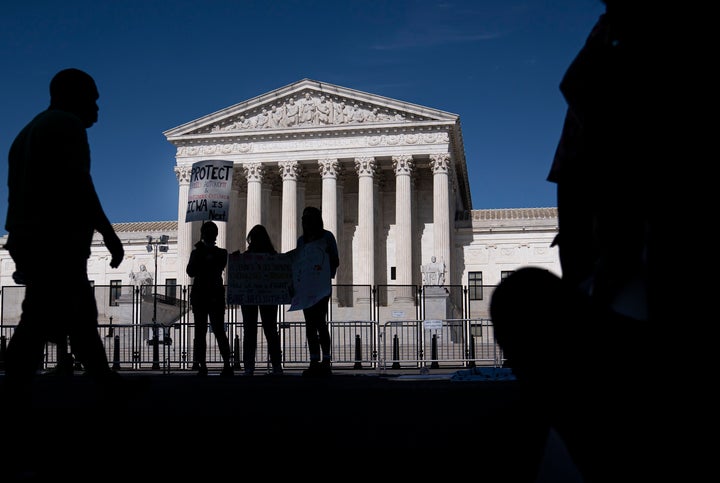
Just over 100 days have passed since the Supreme Court repealed 1973′s Roe v. Wade ruling, and the devastating effects of the landmark decision are already on full display.
Following the judgment in Dobbs v. Jackson Women’s Health Organization from late June, 66 abortion clinics across 15 states have been forced to stop offering abortion services, according to an analysis released by the Guttmacher Institute on Thursday.
Twenty-six of those clinics have been forced to shut down completely, while the remaining 40 are still open but just offering other sexual and reproductive health services. The analysis from Guttmacher, a research organization that supports abortion rights, focused on the states that were enforcing either total or six-week abortion bans as of Sunday.
Clustered primarily in the Southeast, these 15 states include Texas, Oklahoma, Missouri and Alabama. Fourteen of them have no abortion clinics due to near-total abortion bans that came into effect after Roe fell. The fifteenth state is Georgia, which still offers abortion care in 13 of its clinics, but services are heavily restricted since the enactment of a six-week ban in July.
“This is only 100 days in from Roe being overturned, and we already have 14 states where there is no abortion provider,” said Rachel Jones, a principal research scientist at Guttmacher and the lead author on its new report. The nonprofit estimates that 26 states will likely ban abortion within a year of the Dobbs decision.
Texas, because of its sheer size, had the most clinics before the June ruling. There were 23 abortion clinics in the Lone Star State, but none currently offers abortion services. Twelve of the Texas clinics have shut their doors for good, while 11 continue to offer other services.
Arizona previously had eight abortion clinics, none of which now offers abortion care. Seven of these clinics remain open and offer other health services.
Louisiana was home to three abortion clinics before the Dobbs decision, which centered on a clinic nicknamed the Pink House. All of them have since been forced to shut down completely.
Nearly 22 million women of reproductive age live in the 15 states analyzed by Guttmacher. That’s almost one-third of the entire U.S. population of women of childbearing age who are now facing bans or severe restrictions on abortion. And this number doesn’t include nonbinary and transgender people who can get pregnant.
The demand for abortion care has increased in recent years, according to a separate report from Guttmacher that came out days before the Dobbs decision. After decades of decline, the number of abortions being performed saw an 8% increase between 2017 and 2020.
“These bans on abortion are coming at a time when the need is even greater than it has been,” said Jones.
Some states — like Ohio and Indiana — are still battling abortion bans in lower courts, forcing clinics to offer abortion care one day but not the next. And that’s simply not sustainable for facilities that are often already underfunded and understaffed.
“In this whack-a-mole world that we’re living in ― where abortion bans are in place and then are not in place and then are in place ― that’s not a functional environment for clinics,” said Jones. “They can’t keep accommodating these changes and laws. It takes its toll.”
